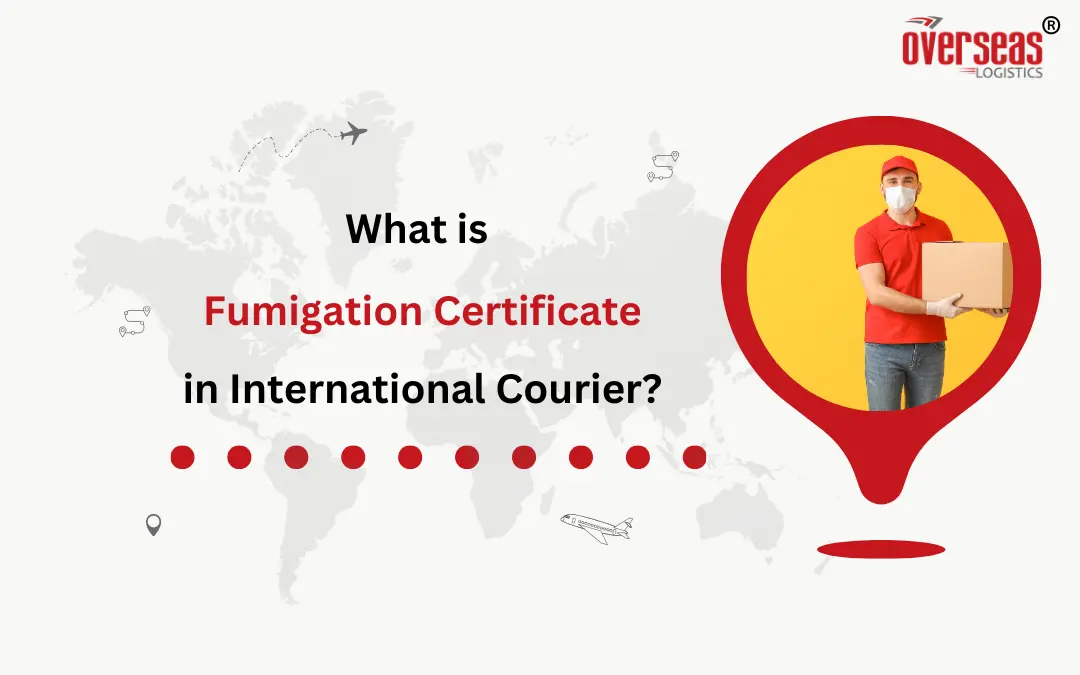In international courier ensuring the safety and integrity of cargo shipments is very crucial. One crucial document that attests to this security is the fumigation certificate, often referred to as a pest-control certificate. Let’s explore the significance of this certificate and why it’s required in the international courier.
Why is a Fumigation Certificate Necessary?
It serves as concrete evidence that all wooden packing materials within a cargo shipment have undergone the necessary fumigation processes. The Fumigation Certificate also confirms that all wooden packing materials in a cargo shipment have been fumigated. This meticulous step ensures that the shipment remains free from pests, thereby safeguarding not only the cargo itself but also preventing potential ecological threats in destination ports.
Mandatory Requirements and Compliance
In the intricate web of international courier regulations, adherence to standards is non-negotiable. The International Standards for Phytosanitary Measures (ISPM 15) stands as a beacon, guiding exporters and importers alike towards a unified approach in wooden packaging treatment. Enforced since 2002, ISPM 15 mandates the fumigation of wooden packaging materials to curb the spread of vermin across borders.
When is a Fumigation Certificate Essential?
International trade hinges on compliance and the necessity of a fumigation certificate becomes apparent when shipping cargo internationally or via ocean freight. Failure to furnish this document can result in severe repercussions, ranging from shipment delays to outright rejection upon arrival at foreign ports.
Essential Details on the Fumigation Certificate
To meet regulatory standards, a fumigation certificate must contain specific details regarding the treatment process. Information such as the purpose of fumigation, types of fumigants utilized, duration of treatment, and temperature conditions during fumigation are imperative. Ensuring meticulous documentation is pivotal in demonstrating compliance with ISPM 15 guidelines.
Diverse Approaches to Fumigation
Fumigation methods vary, each tailored to eradicate pests effectively while adhering to international standards. These methods include:
Heat Treatment (HT): Heat Treatment (HT) mandates the heating of wood until its innermost part reaches 56 degrees Celsius for no less than 30 minutes. This method involves placing timber packaging or wood into a specialized kiln or industrial microwave, rendering it uninhabitable for insects. Pallets subjected to HT display an HT stamp.
Kiln Drying: Kiln Drying mirrors HT but additionally decreases the wood’s moisture content. Pallets are introduced into large heating chambers or kilns and gradually heated, causing excess moisture to evaporate. Since Kiln Drying aims to lower moisture levels rather than specifically eliminate pests, adherence to appropriate IPSM 15 moisture standards is essential and must be documented. Kiln-dried treated wood also bears an HT stamp.
Methyl Bromide (MB) Fumigation: Methyl Bromide (MB) represents the lengthiest process sanctioned by IPSM 15. MB, or bromomethane, is a colorless, odorless gas historically used as a pesticide and fumigant in agriculture. While its general use is declining due to toxicity concerns, it remains suitable for treating wood within controlled environments.
Generally, MB application involves either container fumigation, wherein the wood-containing container is filled with MB, quarantined for 24 hours, aerated, and then released. Another approved method under IPSM 15 entails isolating the wooden cargo and enveloping it in an airtight tent weighted down for sealing. MB is then introduced into the tent, left for the mandated 24-hour period, and subsequently aerated and released. Wood pallets treated with methyl bromide bear an MB stamp.
Dielectric Heat Treatment: Dielectric Heat Treatment utilizes high-frequency alternating electric fields, radio waves, or microwave electromagnetic radiation to raise the entire wood profile to a minimum of 60 degrees Celsius within 30 minutes. Manufacturers of such pallets must secure approval from the NPPO. Industry suggestions hint at this treatment method becoming more prevalent due to its efficiency and operational advantages.
Special Considerations for Shipping to Australia or New Zealand
A fumigation certificate is specially required while sending shipments to Australia or New Zealand. The rapid rise of brown marmorated stink bugs (BMSB) throughout North America and Europe has led the Australasian authorities to make some rules to protect their ecological balance from insects carried by imports from certain countries, including the USA and Europe.
Conclusion
In international courier services, the fumigation certificate emerges as a beacon of compliance and security. By adhering to ISPM 15 standards and embracing diverse fumigation methodologies, exporters navigate the global logistics landscape with confidence, ensuring the integrity of their cargo while preserving ecological balance across borders.

